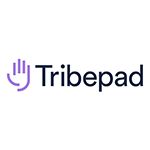At Tribepad we recently launched Stop the Bias, an industry-wide diversity campaign following our eye-opening research report that examines the state of Equality, Diversity and Inclusion in recruitment.
With new insight from more than 2,000 UK adults, our research provides a snapshot of the current state of bias in our industry. The findings don't make for happy reading. In fact, they point to a culture of uncertainty among applicants who feel that diversity data is fuelling bias rather than combatting it.
The message coming through loud and clear from applicants is that despite our best efforts, the current approach to ED&I simply isn't working.
We published our report to examine the current state of bias and to explore how technology can be used to prevent it. Both were subjects of discussion when I sat down with Dr Sven Elbert from HR analyst firm Fosway, to talk about how companies are addressing diversity issues in recruitment and beyond.
NA: How important do you think ED&I has become for companies and recruitment teams in particular in the last couple of years?
SE: We've seen this as a trend going on for many years. Societies as a whole want to be more equitable, more diverse, more inclusive. But the events in the US surrounding the death of George Floyd back in 2020, have accelerated attention to the topic.
So from a corporate perspective, as analysts, we see this topic increasingly more and more in our advisory work. And there's good evidence that a more diverse workforce actually makes organizations also more successful. So finding more diverse talent is really top of mind for organizations in 2022.
NA: ED&I isn’t just the right thing to do, it’s the commercially smart thing too. We know that high performing teams have high levels of diversity and organizations with the best representation tend to be the best performing organizations.
Businesses have always thought this is important and seem to be trying to do more at the moment. But what about candidates? What are their views and have expectations changed when it comes to applying for roles at a company?
SE: There is now generally an expectation from the candidate perspective, that these application processes - the hiring and selection process - are generally more fair and more equitable.
There is sometimes a reservation from candidates to provide full ED&I details, with increasing sentiment that candidates expect a more anonymous application and at least in the earliest stages would prefer that they are considered without all their ED&I details visible.
NA: It's an interesting point isn't it; that idea of trust and whether answering these questions is going to help your progress through the recruitment process or hinder it. Our Stop the Bias report, for example, found that less than a quarter of candidates trust that diversity data is actually being used to benefit their applications.
Some companies have been accused of ticking the boxes, but not really delivering on diversity. And maybe candidates are a bit suspicious of that.
SE: Many organizations have tried to understand what ED&I really means for them, and how they can best fulfill the local needs.This topic is not easily addressed, there's probably not a one-size-fits-all approach. But it’s absolutely top-of-mind for employers. We can see that a lot of them are looking to make a more aggressive move to resolve this.
NA: There’s been a lot of research recently that shows that despite good intentions, the action hasn’t been there yet. What do you think the key reasons are for that? Is this just a really difficult problem to crack? Or is the will not there?
SE: The will is definitely there from the corporate side. I think ED&I is probably not as easily cracked because it can mean different things in different countries and in different geographies.
It needs to be part of a wider strategy and discussion within the company so that it's driven more from the top down with measurable targets, using actual data points, to check the progress. This should be supported with action plans to make sure initiatives are measured on an operational level.
Companies need to tackle this from end to end. There's definitely a lot of attention needed across the entire candidate lifecycle, the entire candidate experience and the employee experience, because ED&I concerns don’t stop when a hire has been made.
NA: The will is there, but we know it’s a difficult problem to crack. Where do you think recruitment technology comes in to help improve the outcomes for the company under candidates?
SE: The talent acquisition systems market has always been very fast to innovate. Any corporation not using a provider that is focused enough on diverse talent acquisition is at risk of falling behind. Not addressing ED&I at the point of hire is something which can actually lead to a disadvantage on the job market today.
Leveraging better technology is a key part of the equation and understanding which parts of the process you can apply what technology to is key.
There are a lot of vendors out there helping craft more equitable job advertising writing. There are vendors who have anonymous application processes who redact the information on resumes and CVs.
Many software vendors have also invested in ED&I reporting and analytics capabilities. Understanding those tools, setting up those metrics for benchmarking, and being transparent about it in the market and with staff is the best use of these tools.
NA: I’m a big believer that transparency builds trust. But how practical do you think that is? Do you think companies are going to resist that? Or do you think they're going to embrace it?
SE: That's a difficult one. We need two or three to take the lead with sharing diversity proof points, then others will follow.
There's concern around the extra work this requires, and whether companies can actually do this. Resourcing also needs to be taken into account. This is where technology can help with more automation and better standards to make things easier.
NA: I think that's a great place to draw this to a conclusion. We know talent acquisition professionals are under a huge amount of pressure to fill a huge number of roles and deliver on the ED&I agenda. Do you have any last thoughts?
SE: I’ve heard from a couple of leaders recently who say that hiring for diversity is now their number one priority. Time to hire and quality are still important, but seeing diversity of hire being the top metric is a very significant shift. And that’s probably the shift we need in the mindset of recruiting teams as well.
You can watch the fireside chat video with Dr Sven Elbert here
Read the findings from Tribepad’s Stop the Bias report at www.tribepad/stop-the-bias






